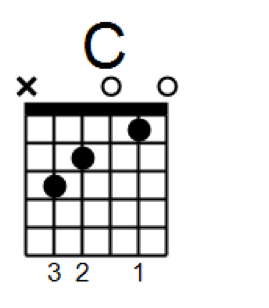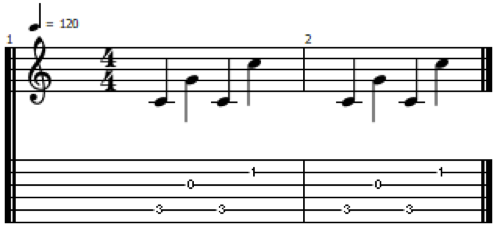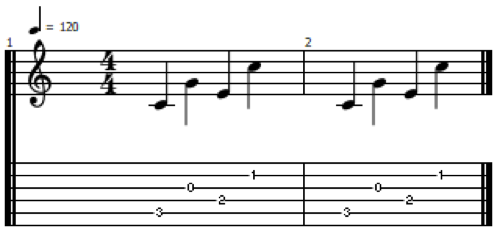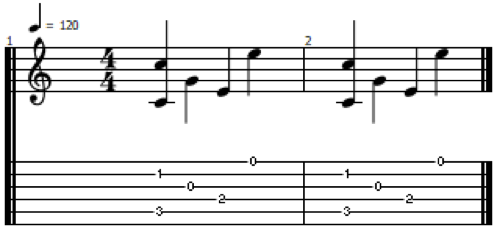Once you are comfortable with strumming open chords and barre chords — what's next?
Learning how to play fingerstyle will expand your playing vocabulary. It will also give you the ability to add a level of expression to your playing that strumming chords can’t always provide.
Let’s take a look at some exercises to help you develop your fingerstyle guitar technique.
Exercise 1 — Starting Simple
We’ll keep it easy for now, and start out with a basic open C chord:

Instead of playing all of the strings at once as you typically would, try the pattern below:

Using your picking hand use your thumb to play the C note on the 5th string, your index finger to play the G note on the 3rd string, and your middle finger to play the C note on the 1st string. Keep your fretting hand holding the open C chord fingering the whole time.
This exercise will get your index and middle fingers to alternate. A key part of playing fingerstyle correctly is to use more than just your thumb and index finger.
It may take a bit of effort at first, but take it slow and simple. Make sure that each note rings out clear. Also, make it a point to let the notes ring out instead of cutting them off.
Got it? Great! Let’s add a little variation to spice things up a bit…
Exercise 2 — Slight Variation

This one uses the same open C chord shape, but here you are going to alternate bass notes with your thumb. Use it to play both the C note on the 5th string and also the E note on the 4th string.
This type of alternating pattern is very common in fingerstyle guitar, particularly in country and folk music.
Exercise 3 — Two Fingers at Once

For our last exercise, we’ll throw a little curve ball at you…
Use your thumb and middle finger to pluck the 5th string and the 2nd string at the same time. While letting the notes ring, then pluck the single notes using the same fingers as you would in the first two exercises.
Wrapping it up
Playing fingerstyle can add emotion and excitement to your playing. Take these exercises as a starting point then experiment with other different open chord shapes. Pretty soon you’ll be giving Paul Simon a run for his money!